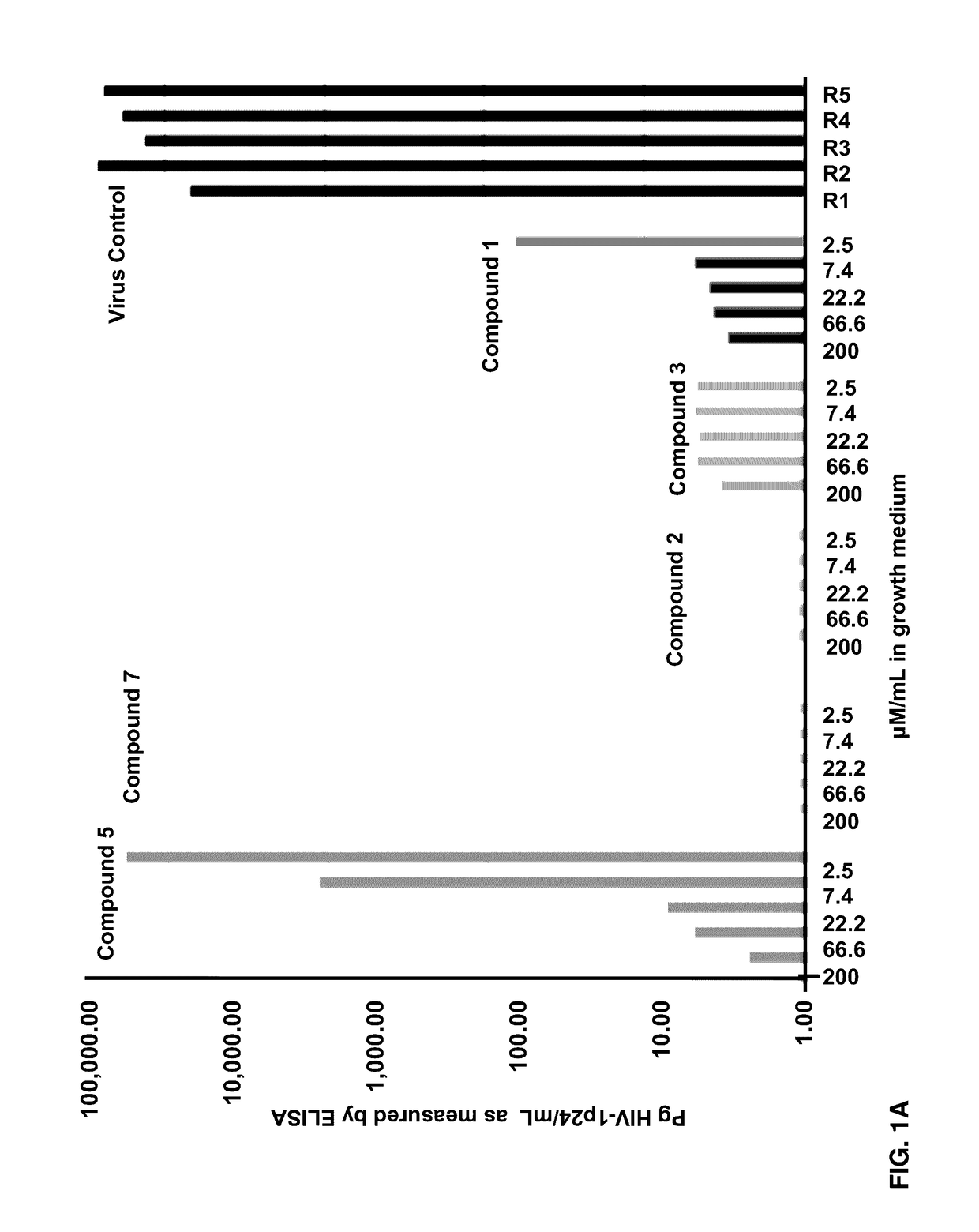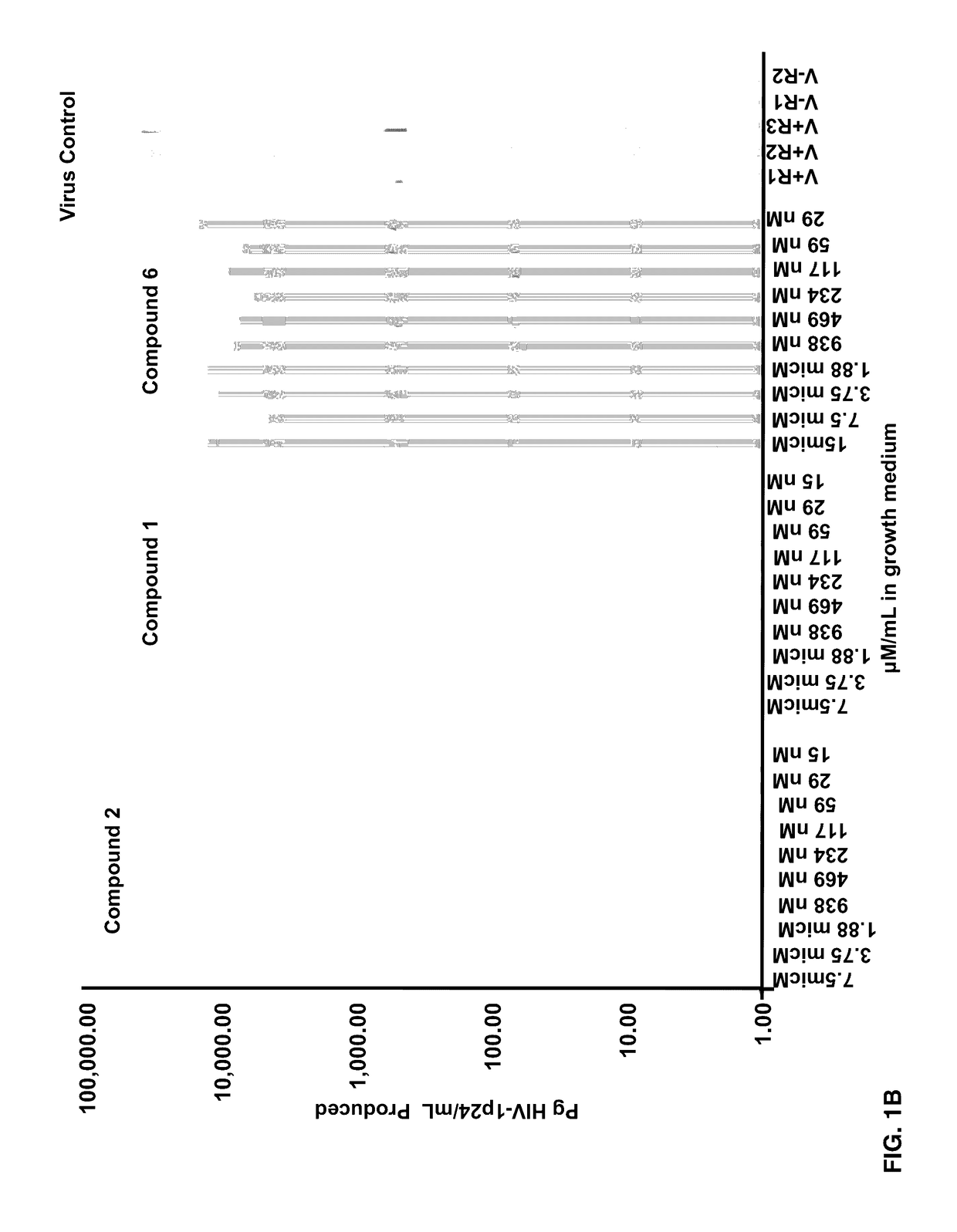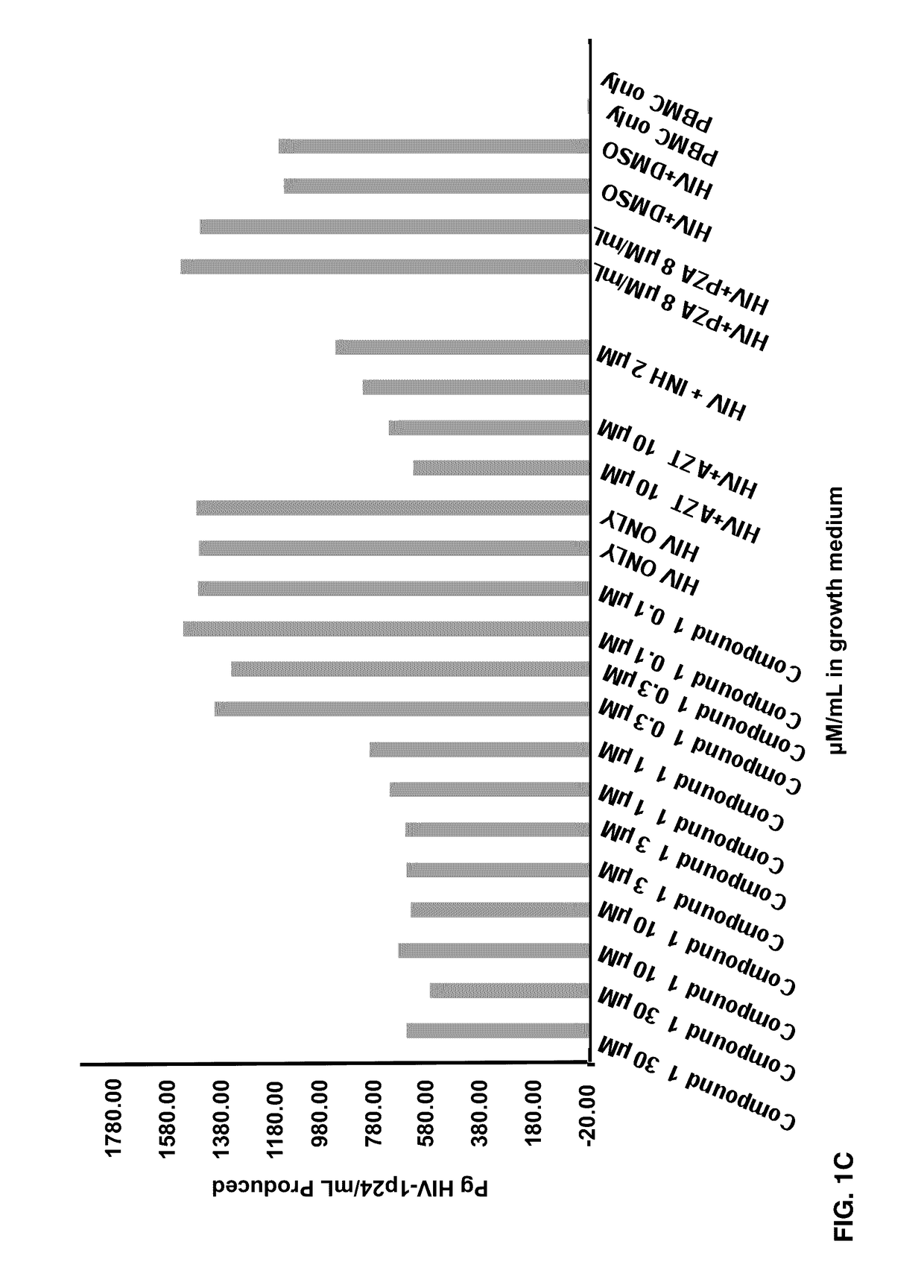Methionine Aminopeptidase Inhibitors for Treating Infectious Diseases
a technology of methionine aminopeptidase inhibitor and infectious disease, which is applied in the field of medicine and molecular biology of infectious diseases, can solve the problems of decline in the immune function of infected individuals, rise in morbidity and mortality rates, and difficulty in the therapeutic management of co-infected individuals
- Summary
- Abstract
- Description
- Claims
- Application Information
AI Technical Summary
Benefits of technology
Problems solved by technology
Method used
Image
Examples
example 1
Materials and Methods
Primary High-Throughput Screening
[0064]A primary high throughput screen was conducted using MAP-C2 microplate processor (Titertek Instruments, Inc., Huntsville, Alabama USA). A library of 175,000 compounds at 30 μM were assayed in a 384 well plates using a dipeptide chromogenic substrate, methionine-proline coupled to p-Nitroaniline (Met-Pro-pNA). Each compound was dissolved in DMSO and stored at −20° C. until use. The total reaction volume was 50 μL, and each reaction contained 40 mM HEPES buffer (pH 7.5), 100 mM NaCl, 100 mg / mL BSA, 0.1 U / mL ProAP, 1.5 mM CoCl2, 600 mM substrate (Met-Pro-pNA), and 252 nM MtMetAP1c. The enzyme was pre-incubated with compounds for 20 minutes at room temperature followed by addition of 600 mM substrate. The reaction was then incubated at room temperature for 30 min and monitored at 405 nm on a spectrophotometer. Compounds that showed greater than 30-40% inhibition were chosen as “hits”.
Determination of IC50 of MetAP Inhibitors
[00...
example 2
[0074]Effects of Compounds 1-8 on HIV-1 p24 antigen levels
[0075]2-hydroxy-1-naphthylaldehyde isonicotinoyl hydrazone (1) is known to inhibit HIV-1 transcription with IC50=2 μM by inhibiting proteins necessary for the cell cycle progression (Debebe et. al. 2007). Serendipitously 2-hydroxy-1-naphthylaldehyde isonicotinoyl hydrazone was identified in the M. tuberculosis screen and found that it also inhibited the production of HIV-1 p24 antigen in a dose response manner (FIGS. 1A-1B) and had activity similar to the positive control AZT. Moreover, compound 1 is structurally similar to a known anti-TB drug—Isoniazid. In the primary screen, it was found for the first time that Isoniazid has anti-HIV 1 activity. The results show that the concentration of Isoniazid required for 50% inhibition of HIV1 p24 produced is greater than 2 μM (FIG. 1C). Interestingly, this preliminary result is comparable to the anti-HIV IC50 for compound 1, its structural analogue (FIG. 1C). Furthermore, another an...
example 3
[0077]Selectivity of 2-hydroxy-1-naphthylaldehyde isonicotinoyl (1) hydrazone for MtMetAP enzymes over HsMetAPs
[0078]2-hydroxy-1-naphthylaldehyde isonicotinoyl hydrazone (1) inhibited MtMetAP1a and MtMetAP1c having IC50 values in the lower micro molar concentrations (Table 2). Further, compound 1 showed greater selectivity for MtMetAPs in comparison to HsMetAP1 and HsMetAP2. Compound 1 has at least 50 fold selectivity for MtMetAPs than HsMetAP1 and at least 20 fold selectivity for MtMetAPs than HsMetAP2. The selectivity for the MtMetAPs over HsMetAPs emphasizes the potential of compound 1 to selectively target the pathogen without leading to toxic effects for the host. It has been established in recent years that HIV-1 uses host molecular machinery for the N-terminal modification of several viral proteins. One such modification is the N-myristoylation of Nef, a HIV-1 accessory protein. Myristic acid is added to the protein by human N-myristoyltransferase-1 (NMT1). However, for NMT1 ...
PUM
| Property | Measurement | Unit |
|---|---|---|
| concentrations | aaaaa | aaaaa |
| concentrations | aaaaa | aaaaa |
| concentrations | aaaaa | aaaaa |
Abstract
Description
Claims
Application Information
 Login to View More
Login to View More - R&D
- Intellectual Property
- Life Sciences
- Materials
- Tech Scout
- Unparalleled Data Quality
- Higher Quality Content
- 60% Fewer Hallucinations
Browse by: Latest US Patents, China's latest patents, Technical Efficacy Thesaurus, Application Domain, Technology Topic, Popular Technical Reports.
© 2025 PatSnap. All rights reserved.Legal|Privacy policy|Modern Slavery Act Transparency Statement|Sitemap|About US| Contact US: help@patsnap.com



